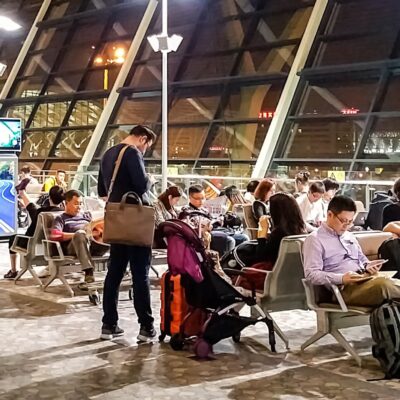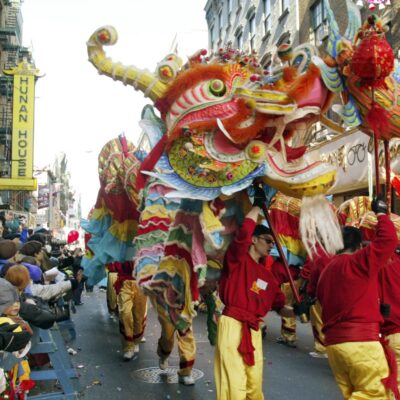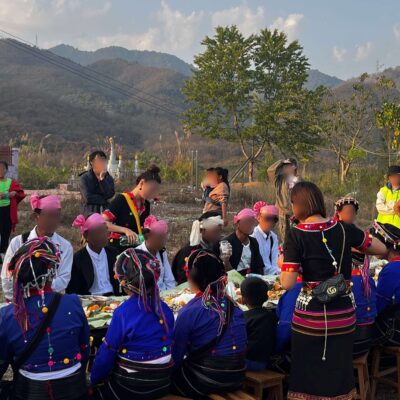The Chinese diaspora is one of the largest in the world. While global cities such as San Francisco and Melbourne are known for their significant Chinese communities and long history of Chinese immigration, it is not as well known that Lima, the capital city of Peru, also has a Chinese community as substantial and with as rich a history, partly evidenced by their sizable Chinatown and ubiquitous Chinese restaurants across the country, known to the locals as chifas.
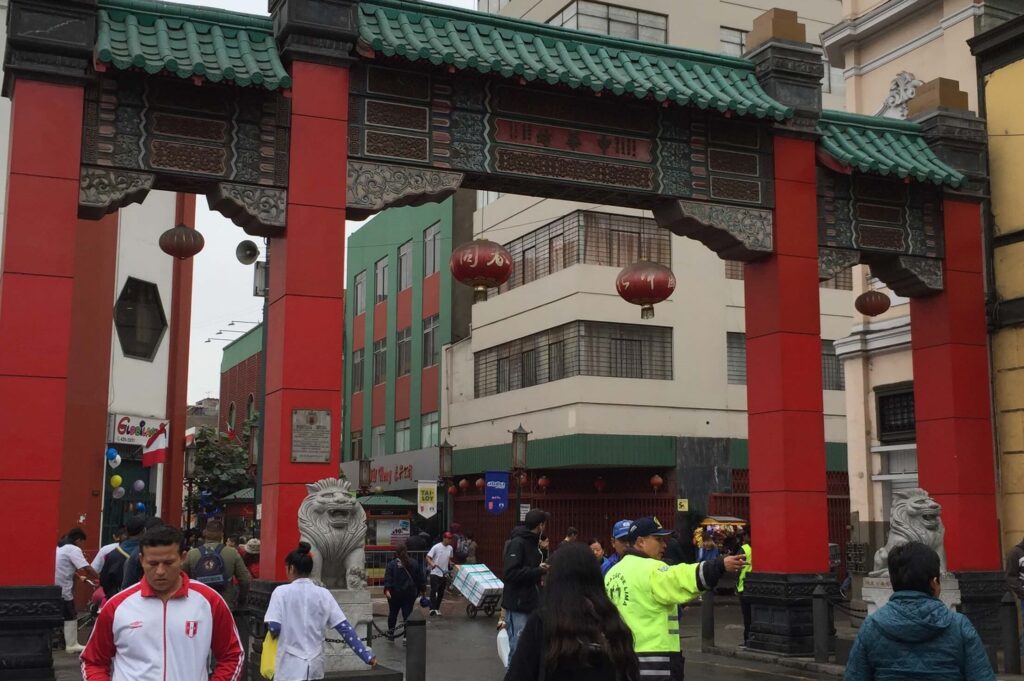
Chinatown in Lima. Credit: Author
Chifa, as a unique adaptation of Chinese cuisine in Peru, holds divergent meanings to chefs and restaurateurs with different cultural backgrounds, reflecting their view of Chinese cuisine within Peru’s multicultural culinary landscape.
My research on authenticity construction in Lima’s Chinese restaurants indicates that there is a generational divide. While older Chinese chefs and restaurateurs view chifa as inauthentic lacking depth and proper references to Chinese culinary traditions, younger chefs and restaurateurs embrace chifa as a legitimate component of Peru’s gastronomic heritage. These contrasting perspectives show the evolving nature of diasporic food cultures and highlight their role in shaping cultural identity among migrant communities.
The history of Chinese diaspora and Chinese food in Peru
Chinese immigration to Peru started in the 1850s, when a large number of Chinese immigrants were sought as indentured workers to meet the demand for cheap labour brought about by the abolition of black slavery. Early Chinese indentured workers in Peru used local condiments and vegetables grown on the plantations where they worked, along with imported Chinese ingredients, in their cooking. Once released from their contracts, many Chinese laborers transitioned to working as domestic cooks. Those who chose self-employment sold food and goods as street peddlers, while others opened small restaurants known as fondas.
At the beginning of the 20th century, the economic recession in Peru coincided with the influx of Chinese migration, which led to populist attacks against the Chinese immigrants and their restaurants. Many Chinese restaurant owners adopted Spanish names and married Peruvian women, who then co-managed the food businesses as part of a family venture. The involvement of a Peruvian partner helped Chinese fondas and their owners to gain access and acceptance from the mainstream clientele, which in turn countered the xenophobic attitudes. Later, the term chifa was adopted to refer to Chinese food that combines Chinese and Peruvian ingredients, and replaced the term “fondas,” to mean small Peruvian-Chinese restaurants. In the decades following the Great Depression, Chinese food in Peru continued to expand as a new wave of rural Peruvians migrating to urban areas embraced chifa. In 1975, a local newspaper in Lima stated that “Chinese cooks now are Peruvians. They are as good as their Chinese counterparts”. Recent Peruvian nationalist discourse has embraced chifa as part of the nation’s cuisine, a far departure from the hostile sentiment Chinese cuisine faced in the past.
My research
My research on Chinese food in Lima compares older and newer Chinese restaurants and their chefs and restaurateurs, investigating how diasporic communities negotiate their identity through culinary practice and position themselves in relation to the dominant host culture. By doing so, I hope to contribute to existing scholarship of authenticity theory, shifting focus from consumer perceptions to producers’ perspectives in the construction of “authentic” ethnic cuisine. I argue that authenticity is not an inherent quality of food, but rather a contested concept influenced by the food producers’ experiences and identity.
I conducted ethnographic fieldwork in two Chinese restaurants, Royal and Madam Tusan, which were both included in the Top Ten Chifa list by the Peruvian food guide, Summum. I also interviewed César Loo, the owner of Royal; Félix Loo, a former chef of Royal (from 2002 to 2010) and the current chef of Madam Tusan (from 2011 onward); as well as Gastón Acurio, the owner of Madam Tusan.
César Loo’s grandfather and father migrated from Kaiping in Guangdong to Lima in 1945 and 1959 respectively. In the 1980s, the then 18-year-old César Loo migrated from Macao to Lima to join his grandfather and father. In 1988, César Loo started his first restaurant – the Palace, the city’s first “proper” Chinese restaurant offering “real” Chinese food. In 1995, César Loo opened Royal, which historian Jacqueline Newman has studied and described as a “5-star Chinese restaurant”.
Félix Loo was Royal’s chef. (Although Félix and César have the same surname they are not related.) Félix Loo was born in China in the 1980s. At the age of 16, he moved to Peru to reunite with his parents, who had moved to Peru earlier. He learnt Spanish and started working in Chinese restaurants. In his early 20s, he started working at Royal, much to his parents’ delight because Royal was widely regarded as the best Chinese restaurant in Lima at the time.
Gastón Acurio was born in 1967 and was trained as a chef at Le Cordon Bleu in Paris. In 1993, he opened his first restaurant, Astrid y Gastón, in Lima. He has since had an immensely successful career becoming the face of Peru’s gastronomic revolution and the nation’s most famous food hero. Dubbed “South America’s super chef,” at one stage Acurio was even tipped to be a presidential candidate of Peru by The Wall Street Journal. While Acurio is not Chinese, he is vocal about his love for chifa and delights in demonstrating how to cook Chinese food on television shows and on social media. In our interview, he said he grew up eating Chinese food and had wanted to own a Chinese restaurant since he was a child. Today he has more than 40 restaurants worldwide of eleven varieties of cuisines, amongst them, Madam Tusan is his Chinese restaurant franchise.
An “Authentic Chinese” restaurant
The dishes of Royal, Cesar Loo’s restaurant, are made by their “oriental chefs” which would satisfy the taste of “a demanding customer.” Almost all the items included in the menu are dishes that can be found in China. The restaurant serves the Cantonese specialty dim sum as well as luxury items, such as shark fins and fish maws, to a small clientele who have the knowledge, appetite and money for them. The menu is printed in both traditional Chinese characters and Spanish.
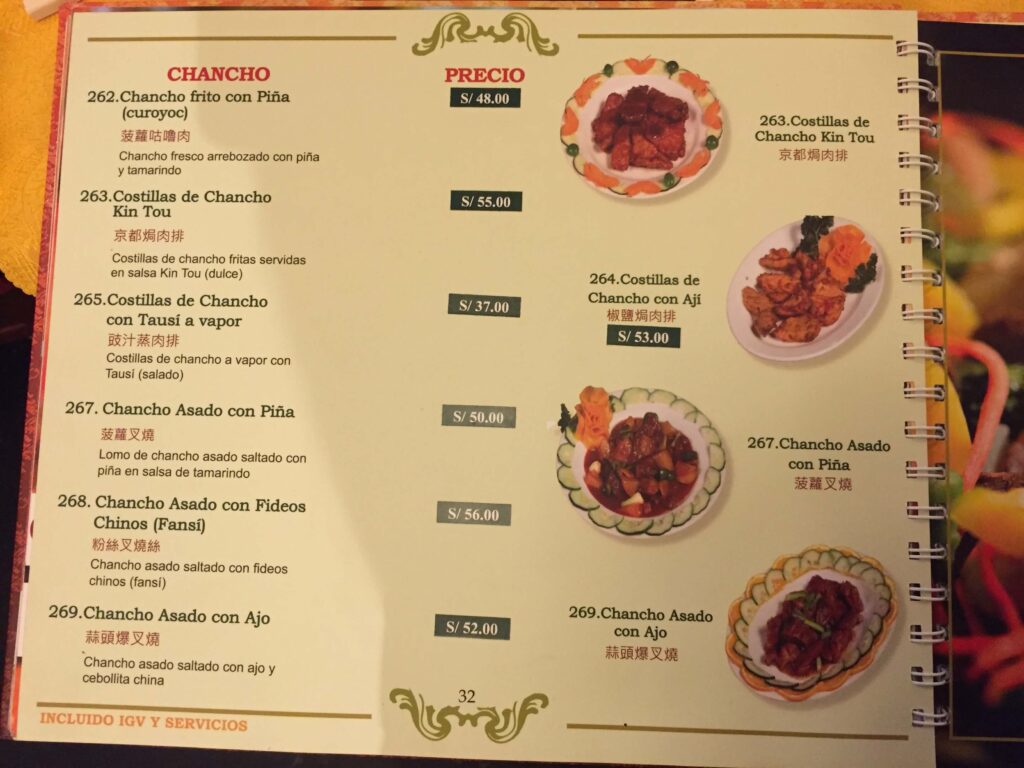
Part of the menu of Royal. Credit: Author
César Loo’s vision for high-end Chinese restaurant in Lima exemplifies his culinary philosophy rooted in his exposure to Chinese cuisine in China. He rejects chifa as inauthentic, positioning his restaurant as educational spaces aimed at introducing Peruvian diners to what he considers “real” Chinese food, deliberately distinguishing his offerings from chifa traditions. In our interview, César Loo emphasised that Royal is a “restaurant” not a “chifa,” rejecting the perception that Chinese food in Peru equates to a cheap watered-down version of actual Chinese dishes. Despite this insistence, the restaurant is still commonly known as “Chifa Royal” by the public.
César Loo, wanting to promote Royal as much as possible and arranged for Félix Loo to appear on television to demonstrate Chinese cooking. However, Félix Loo was recruited by Gastón Acurio to cook modern Peruvian Chinese cuisine at Madam Tusan.
An “Authentic Peruvian-Chinese” restaurant
Madam Tusan is Gastón Acurio’s attempt to position chifa as an integral part of Peru’s national cuisine. The restaurant’s main menu highlights the restaurant’s special chifa dishes, which mix Chinese cooking techniques and Peruvian ingredients which are little known and not available in China. For example, they use Peruvian yellow chilli (aji amarillo) in their chill sauce, and their Peking duck wrappers are made of purple corn. The restaurant’s drinks menu showcases native Amazonian fruit that are uniquely Peruvian. The desserts also meld Chinese and non-Chinese elements, such as cheesecake with “Chinese orange” (kumquat), garnished with quinoa. The restaurant’s menu is in Spanish only—there are English versions for customers who cannot read Spanish, but there is no Chinese version.
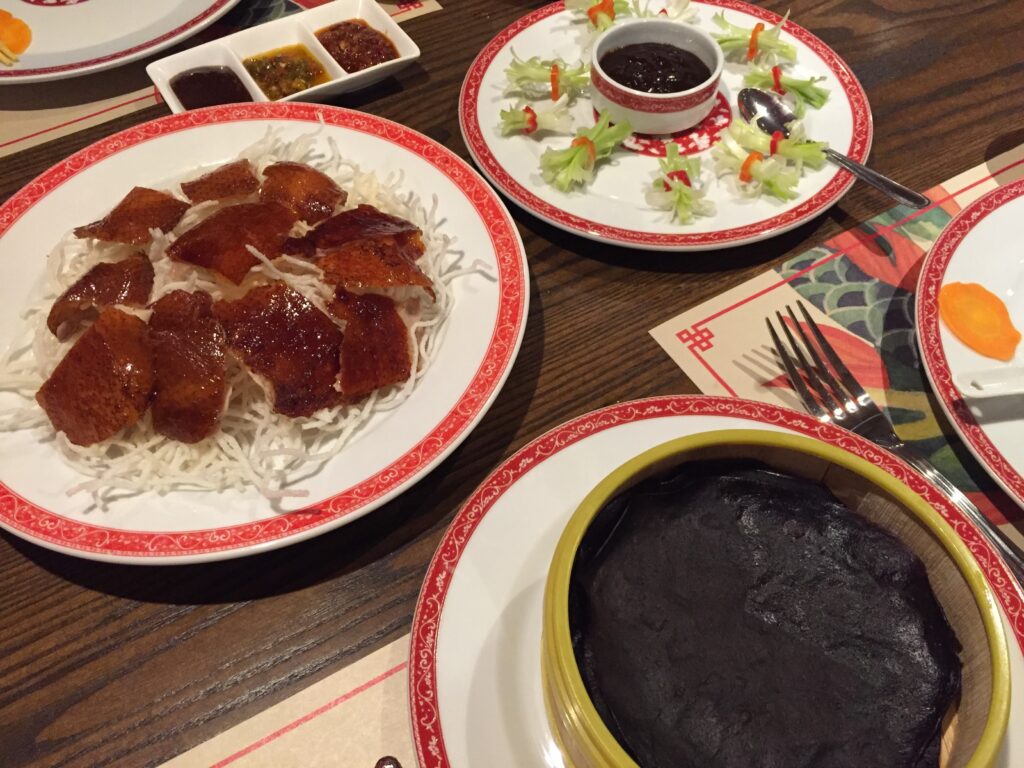
Peking duck is served with purple corn pancakes in Madam Tusan. Credit: Author
Félix Loo described his experience as head chef in Madam Tusan as “eye-opening” due to the creativity he was allowed. At first, Félix Loo resisted Acurio’s idea of making “Chinese” food with native Peruvian ingredients. He did not think it was the “right” way to cook Chinese food, similar to the view of culinary authenticity held by César Loo. But the success of Madam Tusan changed Félix Loo’s view. The creative dishes were popular and he became a supporter of Acurio’s “Peruvian Chinese” vision. Félix Loo learnt to embrace hybridity and transitioned from reproducing and transplanting Chinese cooking from China to Peru to creating Peruvian Chinese food in Peru, becoming a creative interpreter of the cuisine.
In our interview, Gastón Acurio shared his views on the cultural significance and evolution of Chinese cuisine in Peru, particularly through the lens of chifa. He observed that chifa has deeply influenced Peruvian food culture and is integral to the daily lives of Peruvians. He also noted that chifas are beloved institutions found even in small towns in Peru indicating their widespread acceptance and integration: “You will not find one small town in the middle of the Andes or the Amazon without a chifa,”. This widespread presence of chifa restaurants across the country has become a distinct feature of Peru’s foodscape.
While chifa has become fully embedded into Peruvians’ everyday life, Acurio believes that it has not yet undergone a full transition from being regarded as Chinese to becoming truly Peruvian. He compared the evolution of chifa to that of Japanese Peruvian cuisine, nikkei. He noted that unlike Japanese restauranteurs in Peru many Chinese restaurateurs have retained stronger direct ties to their heritage, often bringing in new chefs from China. He believes that chifa has therefore not yet developed to the same extent as nikkei cuisine.
Acurio envisions more changes in Chinese cuisine in Peru further beyond its Cantonese roots. He predicts a future where chifa will incorporate more Peruvian ingredients and depart more from traditional Cantonese flavours. This anticipated evolution exemplifies the ongoing dynamic interplay between Chinese and Peruvian culinary traditions driven by a new generation of chefs eager to explore and redefine chifa. As Acurio contends, until the chefs become fully localised, chifa cannot be considered truly Peruvian, suggesting that culinary authenticity depends not just on the food, but on the cultural identity of those who prepare it.
Conclusion
The evolution of Chinese cuisine in Peru exemplifies how bottom-up dynamics of immigrants reshape cultural narratives in a globalised world. As shown by the history of fondas, early Chinese migrants’ ability to achieve success and recognition was heavily contingent upon their willingness to conform to local preferences and expectations, presenting a version of Chinese cuisine that downplayed its complexity and richness. Later, contemporary migrant restaurateurs, such as César Loo, who aspire to asserting culinary authenticity, served upscale “real” Chinese food that can be found in China. Now, younger chefs invent new-style Chinese dishes emphasising a fusion of Chinese culinary techniques with indigenous Peruvian flavours and ingredients, challenging the culinary status quo and developing an indigenised Chinese-Peruvian identity. These changed culinary norms highlights how immigrant identity is constructed and negotiated through everyday cultural production.
Main image: A typical chifa meal of “Chi Jau Kay”. The “chi jau” sauce with chicken is unique to Peruvian chifa. Credit: Author.

